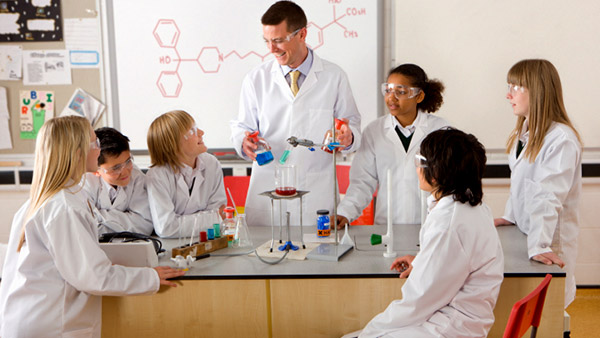We all remember chemistry class in high school and the fun of seeing our teacher perform that cool experiment. The lure of the wow factor of performing chemical demonstrations to teach the interactions between different elements and chemicals has been a steady part of science education for years.
Across the country, several high-profile incidents of students being burned and injured in lab fires brought a heightened awareness to safety.
Stories are numerous, but in 2014, three incidents caused the U.S. Chemical Safety Board (CSB) to issue a safety bulletin, “Key Lessons for Preventing Incidents from Flammable Chemicals in Educational Demonstrations,” to provide the public with key precautions.
One example involved 13 people, most of whom were children at Discovery Museum in Nevada. Authorities and museum officials said a mixture of methyl alcohol and boric acid – components of a routine exhibition conducted daily that creates a whirling “fire tornado” effect – exploded in a flash fire, burning viewers on their hands, arms and faces. That was not the first such incident. In 2006, three students were injured when methanol exploded during a high school chemistry class demonstration, prompting the CSB to produce a video, “After the Rainbow,” focusing on one of the students who had burns on over 40 percent of her body and spent more than two months in the hospital.
Due to this heightened awareness, a task group prepared requirements for the 2015 edition of NFPA 45, Standard on Fire Protection for Laboratories Using Chemicals; this standard continues to be updated. This task group focused specifically on adding protection for students in laboratories where demonstrations were being performed. Some key NFPA 45 requirements mirrored in the CSB safety bulletin include:
- Teachers are required to perform a hazard risk assessment prior to performing each demonstration. They should identify key hazards, decide how to minimize the risk, use needed personal protective equipment and safety items and explain emergency procedures. This process should also include training for other teachers as well as the students.
- Bulk quantities and containers of liquids should not be used during demonstrations and should be stored outside of the classroom. Chemicals used during the demonstration should be in sealed containers only with the pre-measured amount needed for that demonstration.
- Demonstrations that involve open flames, fire or the use of flammable or reactive chemicals must be performed with a barrier between the demonstration and the children or with adequate separation of at least 10 feet. If the demonstration will produce fumes, either a chemical fume hood or other type of ventilation must be used.
- Exits must not be blocked by the demonstration. This allows for quick and efficient exit in the event of an accident.
While many school districts operate on strict budgets, many resources are available to ensure safety, including organizations that provide low-cost training materials and safety programs for school science departments.
Cincinnati policyholders can contact your local independent agent to request services from Cincinnati’s Loss Control department. Safety specialists can help you implement controls to protect students from injury.
This loss control information is advisory only. The author assumes no responsibility for management or control of loss control activities. Not all exposures are identified in this article.

